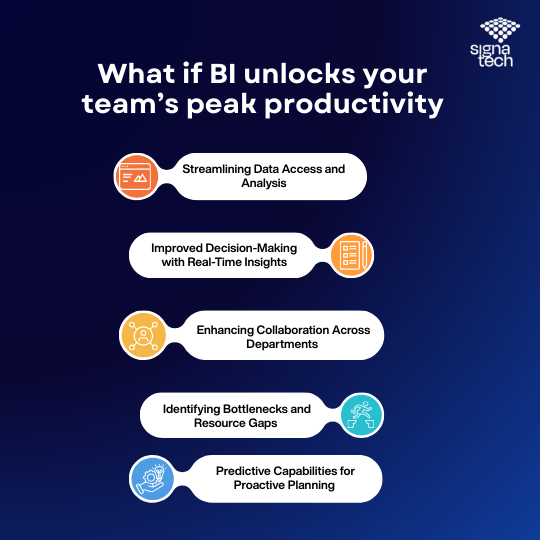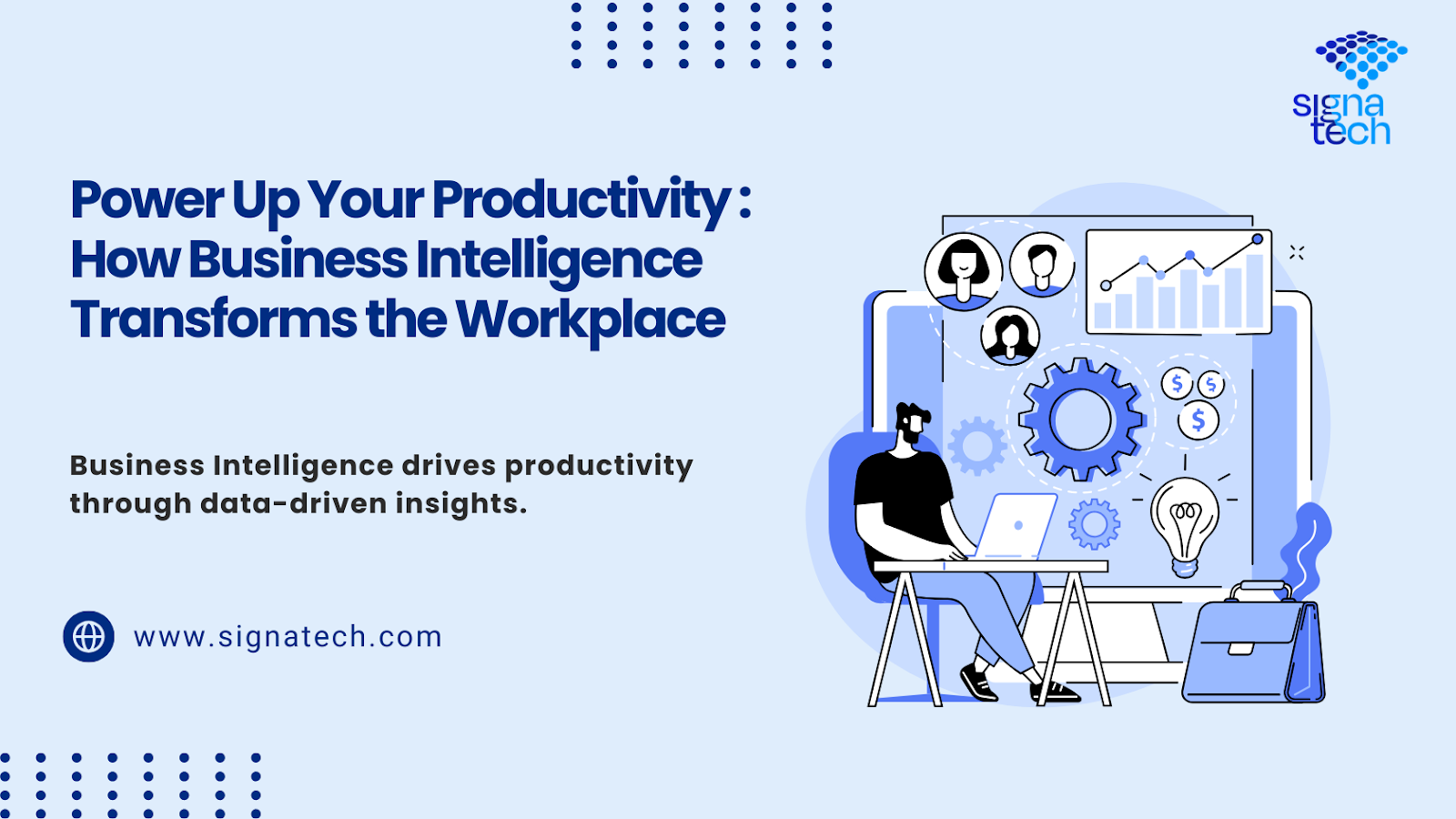Companies across industries are always on the lookout for ways to drive performance, eliminate inefficiencies, and make better decisions. This is best done using Business Intelligence (BI); one of the most powerful tools for this purpose. Both BI has moved past being a buzzword and a tool only for the massive corporations — it is now business-critical, particularly when productivity and real-time insights can keep you in the race.
What is Business Intelligence · Everything at the core, Business Intelligence is the process of collecting data tools, technologies, and strategies that help in turning raw data into valuable insights. This provides decision-makers with insights into what’s going on in their organization, why it’s happening, and what actions to take next. When executed properly, BI can be a driving force for a more productive, efficient, and agile workplace.

#image_title
1. Streamlining Data Access and Analysis
Data gathering and analysis are among the more time-consuming elements of modern business. Employees usually have to put in hours of efforts to collect data from different departments, prepare reports and even cross-verify the results. What Business Intelligence tools do is eradicate this bottleneck by bringing data from diverse sources—be it CRM systems, ERP Software, spreadsheets, customer feedback tools, to one place and presenting it in a single dashboard.
Employees at all stages have fast access to actionable insights with real-time dashboards and automated reporting. When a sales manager tracks lead conversion rates or an HR executive analyzes employee retention metrics, BI tools let them spend less time on manual tasks and more time on strategic decision-making.
2. Improved Decision-Making with Real-Time Insights
In the old model, decisions were often made on gut or outdated report. BI promotes a data-driven culture in which decisions are made based on facts. Managers don’t have to wait for end-of-quarter reports to catch underperformance or lost opportunities. Instead, they can see live data and identify trends in real time—enabling them to take corrective steps when a minor issue could snowball into a big one.
For instance, if an operations manager detects a spike in downturn of product manufacturing units on BI dashboards, they can quickly scope the cause as equipment downtime or labor shortage, and take immediate actions to mitigate it. This type of responsiveness reduces disruptions, allowing workflow to continue smoothly.
3. Enhancing Collaboration Across Departments
BI platforms promote transparency and dismantle silos between departments. Collaboration will happen organically when teams work from a shared understanding of business goals and have access to the same data. It enables marketing, sales, finance, and operations to coordinate all their reporting around aligned KPIs so the entire team has clarity and accountability to common goals.
For example, imagine the marketing team sees an increase in lead generation in a certain area, and even though the sales team is on it, they aren’t closing enough deals in that area. With BI, they can visualize the same data—campaign performance, customer feedback, sales rep activity—and align strategies in real time to close the gap. Such cross-functionality breeds collaboration, increasing productivity and optimizing team synergy.
4. Identifying Bottlenecks and Resource Gaps
All businesses encounter productivity bottlenecks — in some cases due to process inefficiencies, in others due to resource constraints. BI systems allows companies to spot these challenges rapidly. A repetitive manual process that could be automated, perhaps, or a particular team that’s being spread third too thin; BI brings to light patterns and anomalies that otherwise take place under the radar.
This allows organizations to redeploy resources, optimize workflows or purchase new resources with precision. And this ongoing optimization pays off in the form of employees who continually do more and spend less time and budget doing it.
5. Motivating Employees with Performance Visibility
Employee engagement significantly improves when employees are able to see the impact of their work on the overall achievement of company goals. Tools that are for BI provide performance dashboards at the level of individual and team with transparency and recognition. For instance, a salesperson can track their monthly targets and achievements in real time, which leads to ownership and motivation.
Additionally, managers can leverage BI insights to provide tailored support and feedback, which helps ensure that everyone on the team is operating at peak productivity. Besides driving productivity, this approach to performance management cultivates a culture of accountability and ongoing improvement.
6. Predictive Capabilities for Proactive Planning
In addition to tracking current performance, BI tools with predictive analytics can anticipate likely future events based on past data. They allow businesses to predict market trends, customer behavior, inventory requirements, or staffing needs well in advance of when they actually need to know. It enables organizations to be more proactive in planning campaigns, stock and hiring and budgeting — instead of reacting to problems after they have happened.
Predictive insights lower the level of ambiguity and ensures better utilization of resources and expedites the execution of strategic initiatives, all of which lead to enhanced organizational productivity.
All of these benefits add up, and the result is evident, Business Intelligence turns workplaces into smart, data-driven ecosystems where productivity is no longer merely a metric, but a constantly improving status.
And for companies who need to deploy a new BI strategy or update their existing strategy, Signatech provides Business Intelligence Consulting services that align with your operating requirements. Be it, manufacturing, healthcare, retail, logistics, our BI solutions simplify complexity, drive collaboration while increasing productivity for the entire organization. This is how we can partner with you and get the most from your data.
